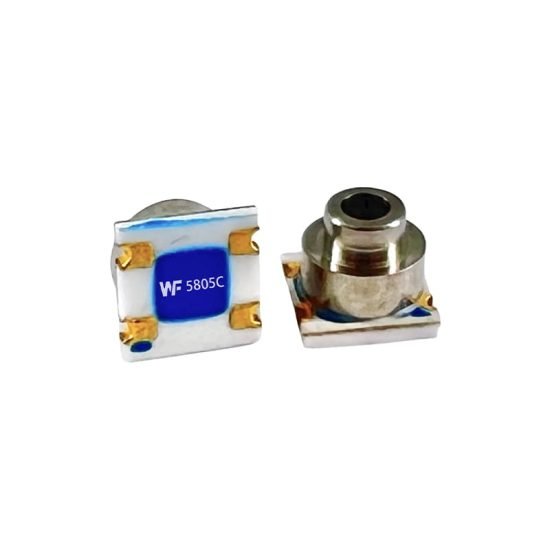목록
Water pressure sensors play crucial roles in underwater operations, marine monitoring, and diving equipment. Selecting appropriate sensors requires comprehensive evaluation of accuracy requirements, pressure range, environmental compatibility, packaging design, and cost-effectiveness.
1. Accuracy and Stability Requirements
측정 정밀도의 중요성
Accuracy stands as the primary selection criterion for water pressure sensors. For diving applications, depth measurement errors directly impact diver safety. Modern MEMS sensors achieve 0.05% full-scale accuracy, significantly exceeding traditional analog devices. Temperature coefficient remains critical, with quality sensors maintaining drift within 0.25% full-scale range.
장기적인 안정성 고려 사항
Stability determines sensor reliability during extended operation. Marine environments present saltwater corrosion, temperature variations, and mechanical vibrations affecting sensor performance. Annual drift should remain below 0.25% full-scale for reliable operation in demanding conditions.

2. Pressure Range and Dynamic Response
작동 압력 범위 결정
Different applications demand vastly different pressure capabilities. Dive watches typically operate within 0-10 bar range, while deep-sea exploration requires hundreds of bars measurement capability. Sensors should operate within 30-80% of their full range for optimal accuracy while avoiding overload damage.
응답 시간 및 동적 특성
Rapid response proves critical for safety applications. Modern MEMS sensors achieve 2.5-millisecond startup times, meeting real-time monitoring demands. Dynamic response encompasses both speed and frequency characteristics for applications monitoring water flow pulsations or wave effects.
3. Environmental Compatibility and Package Protection
해수 환경 호환성
Seawater’s corrosive nature demands stringent material requirements. Stainless steel diaphragms, titanium housings, or ceramic packages provide corrosion resistance. Sensors typically feature protective gel filling preventing seawater penetration. IP68 protection rating represents minimum requirements for underwater applications.
온도 범위 및 보상
Marine environments experience wide temperature variations from -2°C in polar regions to 40°C in tropical shallows. Sensors require broad operating ranges, typically -20°C to +85°C. Built-in temperature compensation circuits effectively minimize temperature impact on measurement accuracy.
4. Interface Methods and System Integration
디지털 인터페이스의 장점
Modern water pressure sensors employ I2C, SPI, or UART digital interfaces for microcontroller system integration. Digital outputs eliminate analog signal transmission noise, improving system reliability. Interface protocol compatibility and data transmission rates must satisfy real-time requirements.
전력 소비 및 관리
Low-power design proves essential for battery-powered underwater devices. Modern MEMS sensors achieve working currents of tens of microamps, with standby currents reaching nanoamp levels. Sleep mode functionality further extends battery life in energy-constrained applications.
5. Cost-Effectiveness and Reliability Assessment
수명주기 비용 분석
Sensor costs encompass not only purchase price but also integration, maintenance, and replacement expenses. High-precision sensors, despite higher initial investment, provide stability and reliability reducing long-term maintenance costs. Large-volume applications benefit from economies of scale in procurement.
공급망 안정성
Selecting established manufacturers ensures supply chain stability and technical support. Product certifications and quality system compliance provide reliability assurance. Long-term supply commitments prove particularly important for applications with extended product lifecycles.
결론
Water pressure sensor selection represents a comprehensive decision process requiring balanced consideration of accuracy, range, environmental compatibility, interface compatibility, and cost factors. MEMS technology advancement provides superior solutions for water pressure measurement, but proper selection still demands thorough understanding of application requirements and technical specifications.
위의 소개는 압력 센서 기술 적용의 표면적인 부분에 불과합니다. 우리는 다양한 제품에 사용되는 다양한 유형의 센서 요소, 작동 방식, 장점과 단점을 계속해서 탐구할 것입니다. 여기에서 논의된 내용에 대해 더 자세히 알아보려면 이 가이드 뒷부분의 관련 콘텐츠를 확인하세요. 시간이 촉박한 경우 여기를 클릭하여 이 가이드의 세부정보를 다운로드할 수도 있습니다. 공기 압력 센서 제품 PDF 데이터.
다른 센서 기술에 대한 자세한 내용은 다음을 참조하십시오. 센서 페이지를 방문하십시오.
